INTRODUCTION
I’ve always had an keen interest in systems, the X’s and O’s technical side, with a desire to document team systems across the entire NHL.
Systems are mostly a coach’s implementation, and once there is a coaching change there is the system change, even if it is only tweaks. I’ve found that doing a little systems analysis helps in the overall scouting process as well, a concept I won’t go into detail on here, but I’ve written about its benefits on my own blog.
In an effort to document the Leafs systems, I’m going to dedicate a three-post series breaking down implementation in the defensive, neutral and offensive zones, followed by special-teams.
This first post is dedicated specifically to the defensive zone, with a focus on trouble clearing the puck out, leading to other positional failures, scoring chances, penalties, shots on goal, and eventually goals scored.
DEFENSIVE ZONE SYSTEMS
I’m going to leave zone entries for another post, because I believe that is more relevant to the neutral zone. This post focuses on when the puck is in the defensive zone; how the Leafs set up to create turnovers, regain possession, and handle the pressure of a sustained forecheck.
Before getting right into the main points, I wanted to address the concept of the system’s fundamentals as forcing the opponent to the perimeter (outside) and allowing shots from a greater distance.
I find that to be a slight misconception. It is natural to be in a defensive position between the puck and the net at all times, and pushing players to the outside has a more philosophical bent and is defense 101 rather than a component for which to build a system around.
Teams would be satisfied to keep players on the perimeter moving the puck without penetration into scoring areas. So the main part of a defensive system has less to do with clogging up the middle and keeping opponents to the outside, and more about regaining possession, quick ups and transition.
The word transition, bandied around by Leafs coaching and management staffs, is one of the weaker areas addressed by Randy Carlyle’s systems as we shall see.
Opponents controlling the puck leads to what Randy Carlyle dubs as “receiving,” where the defending team withstands the barrage of shots, with the hope that scoring chances are few and far between whether set up properly or not in the defensive zone.
System implementation isn’t meant to make “receiving” a typical defensive philosophy. The goal is to isolate the puck carrier, engage with (hopefully) numbers (one engaged, one support/layer), regain possession and transition to offense all while facing varying degrees of forechecking pressure.
Defending off the rush isn’t controlled by a systematic process and is reliant on individual player skills – gap control, skating ability and agility, and not coaching implementation. Defenders are at the mercy of the onrushing player with the puck and must react accordingly. Coaches desire players between the puck and the net and emphasize taking out players along the boards, since it eases creating a turnover while aligning with the philosophy of isolating the puck and engaging.
An invaluable resource for detailed comprehension is Coach Nielsen’s blog touching on a variety of systems concepts. The site contains diagrams and video that explains his specific concepts and ideology, but the ideas are adaptable.
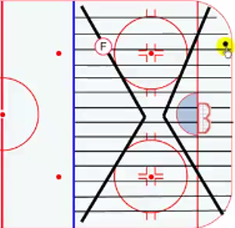
For instance, this diagram (right) with converging lines from the corners into the slot area is a good guide when focusing on how the team moves in relation to where the puck is in the zone, without any specific detail on any implemented system.
The puck in the top right corner should have the forward line up on the same parallel line as it appears. As the puck slices through the perpendicular lines, the forward slides down through the slot along the converging lines, jumping along each parallel line, and staying in line with the puck.
An interesting concept was presented in the Coach’s video – that of the inverted house, which looks like an inverted scoring chance home plate, where the focus is closer to the net and the crease area with less focus at the top of the zone. If the goalie can see it he can stop it, is the logic here.
That sounds analogous to Randy Carlyle logic in a statement by Bobby Ryan on the differences in styles as featured in Elliotte Freidmanís 30 Thoughts blog.
23. Ryan said there was one on-ice adjustment with his transition from Anaheim to Ottawa. Senators head coach Paul MacLean wants his forwards to engage opponents who go to the half-wall with the puck in the defensive zone. Ryan remembers then-Ducks head coach Randy Carlyle demanding they stay in the middle of the ice. “If the goalie can’t stop it from out there, we’ll get another one,” Ryan said Carlyle would say.
As the puck moves out of the corner, the strong side forward and defenseman lineup along the parallel line, with the forward following the path of the defenseman at the point. Players on the weak side converge to the middle of the ice and essentially cut it in half. This is called an overload and looks like the image below. Note the amount of space given up on the one side while cutting down the ice in half.
Formations can vary depending on a high/low box shape, or loading up in one half of the ice. The zone is broken down as outlined below from the invaluable Blue Seat Blog.
It is common knowledge that Carlyle prefers a system which collapses forwards down low, while attempting to cut the ice in half, forcing an overload, which carries a risk of open space if the puck gets to the other side. This contributes to additional zone time when the opposition applies pressure, especially along the boards, an area that’s been difficult for the Leafs.
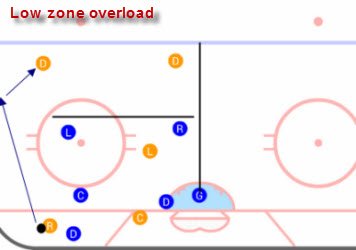 One of the drawbacks of having forwards so low is what I refer to as “the accordion.” If I am an opposition coach, I would get the puck in deep (even as a dump in play), force the natural collapse of forwards and get the puck back to the point, forcing the defending forwards to turn around and get out there quick.
One of the drawbacks of having forwards so low is what I refer to as “the accordion.” If I am an opposition coach, I would get the puck in deep (even as a dump in play), force the natural collapse of forwards and get the puck back to the point, forcing the defending forwards to turn around and get out there quick.
If there is a clear shot on goal, low-zone forwards converge to the net. If there isn’t a direct shot to the net, the puck can be sent back down low and have the process start again, collapsing the forwards and kind of playing them like an accordion. Not only does this tire out the defending team, it creates holes and passing lanes in the middle of the ice that can be used as additional space for the attacking team forwards to encroach looking for a better position for a shot on goal.
Now, that’s how it’s supposed to work conceptually. Forwards collapse, the puck carrier would be isolated, the turnover occurred, and a breakout follows based on a quick transition.
Reality bites, however. The Leafs have had a terribly difficult time breaking out of their own zone and try to clear the puck out into the neutral zone and fight to get it back out there. Adding to the difficulty skating it out, they don’t set up for good distribution outlets, causing them to try to regroup or change the flow to the other side of the ice while looking for an opening and leads to more confusion, clearly an undesired effect.
The Leafs struggle to move the puck out leads to an exceptional amount of zone time and sustained pressure indicative of their suspect possession stats, a clearly undesired element. I believe that this actually starts in the neutral zone.
At the beginning of the season, they played forwards a little deeper in the zone and clumped up to the point that they were an easy target for forecheckers. More recently, forwards are stretched out a bit further out into the neutral zone, attempting to move the puck out of the zone easier with long stretch passes. That, in turn, creates gaps that introduce additional risk. The Pittsburgh Penguins have a similar problem with an immobile blueline aside from Kris Letang, exploited by the Boston Bruins in the 2013 Eastern Conference Finals, but this isn’t about the Penguins.
This short video shows how the Leafs clumped up at the beginning of the season. The image taken from the video shows some disorganization.
When Montreal successfully moved the puck back to point, the amount of space given up in the middle is fairly evident.
One week later, as the Leafs took on Minnesota, more disorganization in their zone emerged. It is visible that, once they try to get into formation and are overwhelmed, the structure breaks down leading to clearing attempts by chipping it off the glass – if successful. When they finally do retrieve the puck, they have very few outlets and struggle to move it up.
Once again, they line up the forwards so low into the zone they could almost lay a blanket over all players.
Pay attention to the end sequence, where Mason Raymond has to turn and go back behind his net to pass it off before Carl Gunnarsson does the exact same thing on the other side. Even then, Raymond is forced to pass it across the ice to an awaiting Dion Phaneuf that finally clears it out of the zone.
In this next video, the Leafs are under pressure versus Edmonton, Anaheim, Buffalo, and in the 2-1 shootout win over the Washington Capitals.
Notice how everybody is lined up deep in the zone as the puck was skated out from behind the net and directed towards the blue line. David Clarkson had to turn around and quickly get to the point, which he did in this instance successfully, forcing the puck to the middle of the ice.
Every instance of sustained pressure starts with, and features, that low zone collapse. Here is Anaheim.
Here are the Washington Capitals.
The game against the Predators on November 21 was a good example of how breakdowns can lead to sustained pressure and eventual scoring chances. Cody Franson made a couple of rough errors in this video which is essentially a continuation of a very difficult season. Isolating Franson wasn’t the main goal, it just happened to be a good example of what happens after a mistake.
Of course, who could forget “the shift?” That two-minute long barrage from the Bruins at the beginning of November. If you’re looking for the ultimate in defensive zone breakdowns, perimeter play and sustained pressure, look no further.
Despite the length of time on that one shift, most of the puck movement was from the outside as coaching staff would probably trade-off rather than a lot of movement in the slot and crease area.
This could very well be the worst shift of the Leafs’ entire season.
I will finish this off with this particular video; there is an element inside related to the neutral zone.
Notice how the Leafs clear the puck out of the zone and how easy it is for the Wild to reenter, especially with control of the puck.
That’s a neutral zone issue and we’ll talk about that next post.
Follow Gus on Twitter:















![John Gruden after the Leafs prospects’ 4-1 win over Montreal: “[Vyacheslav Peksa] looked really comfortable in the net… We wouldn’t have won without him” John Gruden, head coach of the Toronto Marlies](https://mapleleafshotstove.com/wp-content/uploads/2025/09/gruden-post-game-sep-14-218x150.jpg)







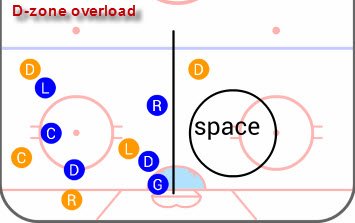
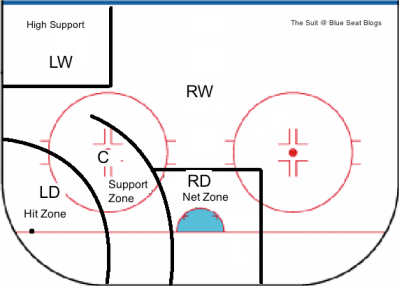
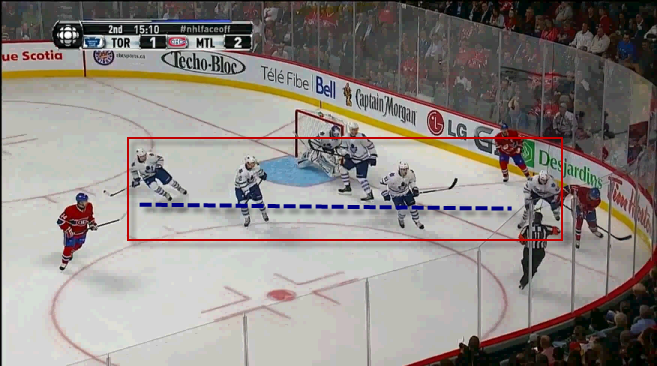
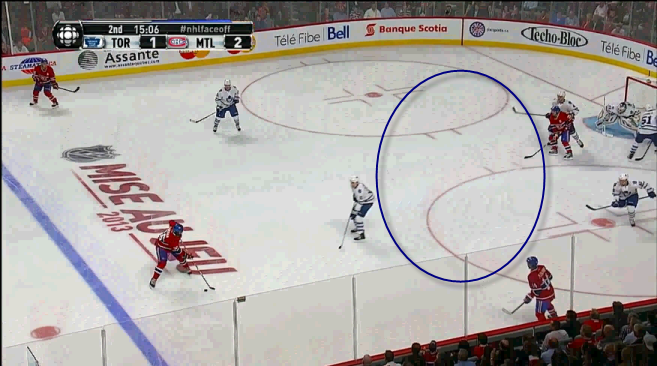
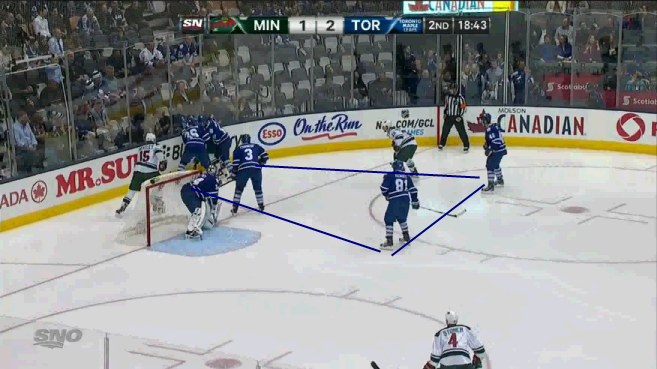
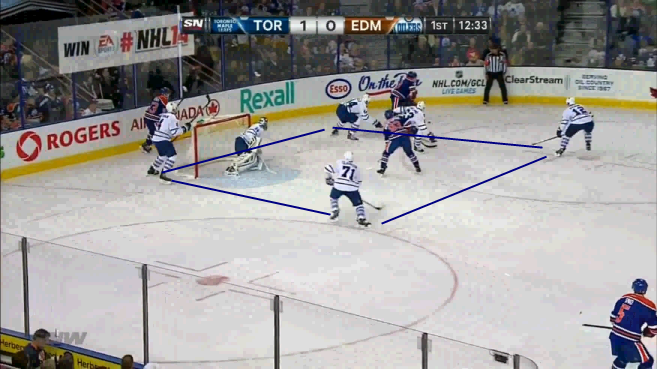
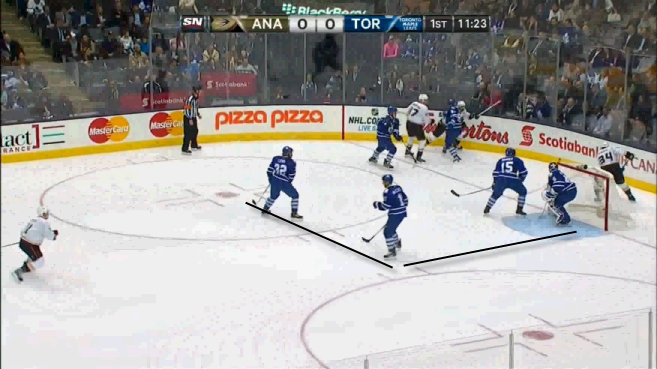
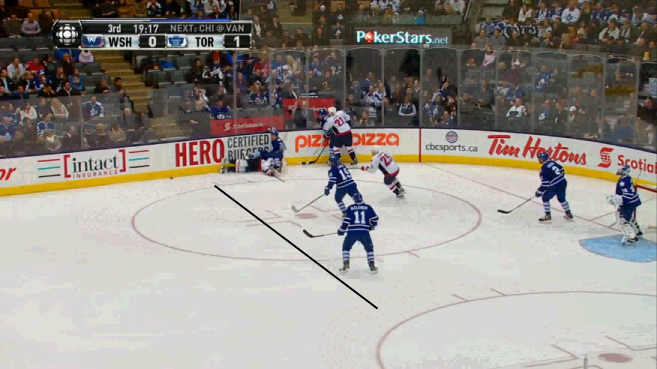
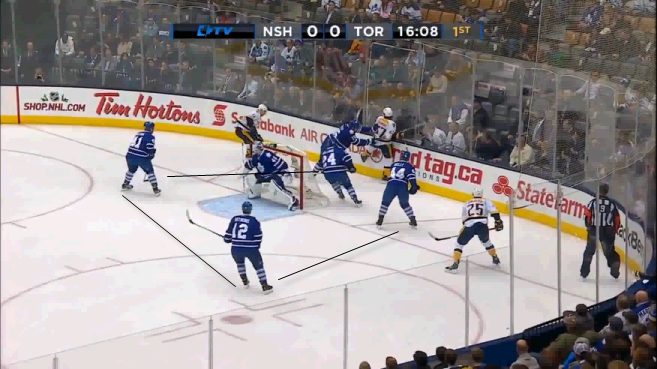











Comments are closed.